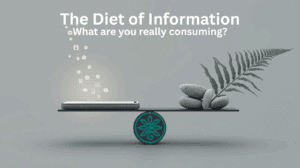The Dream Killer We All Know
Five simple words. Five words that have silently shaped more lives, crushed more aspirations, and perpetuated more suffering than perhaps any other phrase in human language: “That’s just how it is.”
We’ve all heard it. We’ve all said it. And if we’re being honest, we’ve all used it as a shield against the discomfort of change, the fear of confrontation, or the overwhelming feeling that some problems are simply too big to solve.
But what if I told you that this seemingly innocent phrase is actually one of the most destructive forces holding back human progress?
The Resignation Trap
Think about it. When was the last time you heard someone say “that’s just how it is” about something positive? We don’t use this phrase to describe beautiful sunsets, acts of kindness, or moments of joy. No, we reserve it exclusively for the things that frustrate us, hurt us, or hold us back:
– Toxic workplace cultures where employees are overworked and undervalued
– Dysfunctional family dynamics that drain our energy and happiness
– Broken systems that seem impossible to navigate or change
– Unfair situations that we feel powerless to address
The phrase becomes our white flag of surrender, our verbal shrug of defeat. But here’s what we often forget in these moments of resignation: someone decided how it is.
The Truth Behind “How It Is”
Every toxic workplace culture didn’t emerge from thin air – someone created those policies, established those expectations, and normalized those behaviors. Every dysfunctional system was designed by human hands, implemented by human decisions, and maintained by human choices.
This realization is both liberating and terrifying. Liberating because it means change is possible. Terrifying because it means we might have more power – and therefore more responsibility – than we’re comfortable admitting.
The Revolutionary Mindset
History’s greatest achievements share one common thread: they all came from individuals who refused to accept the status quo. Every revolutionary idea, every breakthrough innovation, every positive social change emerged from someone who looked at “how things are” and dared to ask, “But what if it wasn’t?”
Consider some of history’s most transformative moments:
– Civil rights leaders who refused to accept that segregation was “just how it is”
– Inventors who wouldn’t accept that human flight was impossible
– Entrepreneurs who challenged the notion that “this is just how business is done”
– Social reformers who rejected the idea that poverty and inequality were inevitable
None of these changes happened because people accepted the existing reality. They happened because brave individuals chose to challenge it.
Decoding the Real Message
The next time someone tells you “that’s just how it is,” try to hear what they’re really communicating: “I’ve given up trying to change it.”
This isn’t necessarily a judgment – sometimes people are exhausted from fighting battles that seem unwinnable. Sometimes they’ve tried to create change and faced overwhelming resistance. But recognizing this underlying message is crucial because it helps us make a conscious choice: Will we adopt their resignation, or will we choose a different path?
Your Reality, Your Choice
Change begins with curiosity. It starts when we replace acceptance with inquiry.
Here’s the empowering truth: Don’t let other people’s resignation become your reality.
You have the power to:
– Set boundaries in toxic situations
– Seek out healthier relationships and environments
– Advocate for changes in systems you’re part of
– Create new solutions to old problems
– Model a different way of being for others
The Path Forward
Remember, “how it is” is simply “how it’s been” – not how it has to be. Every day, you have the opportunity to challenge assumptions, question norms, and refuse to accept mediocrity as inevitable.
This doesn’t mean every battle is worth fighting or that change is always possible overnight. But it does mean approaching life with the understanding that human-created problems can have human-created solutions.
The next time you catch yourself or someone else saying “that’s just how it is,” pause. Take a breath. And ask yourself: What if it wasn’t?
That simple question might just be the first step toward the change you’ve been waiting for.







